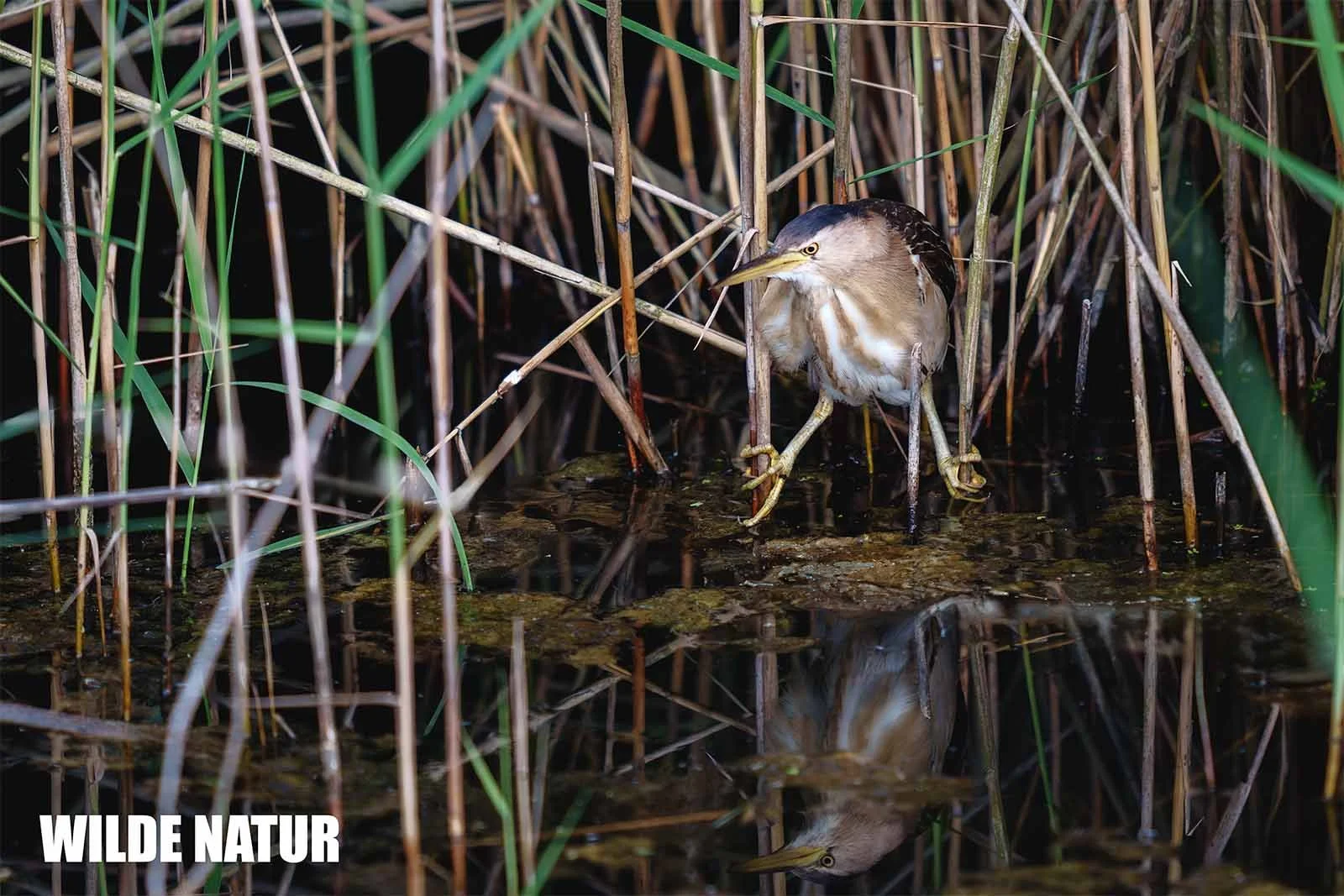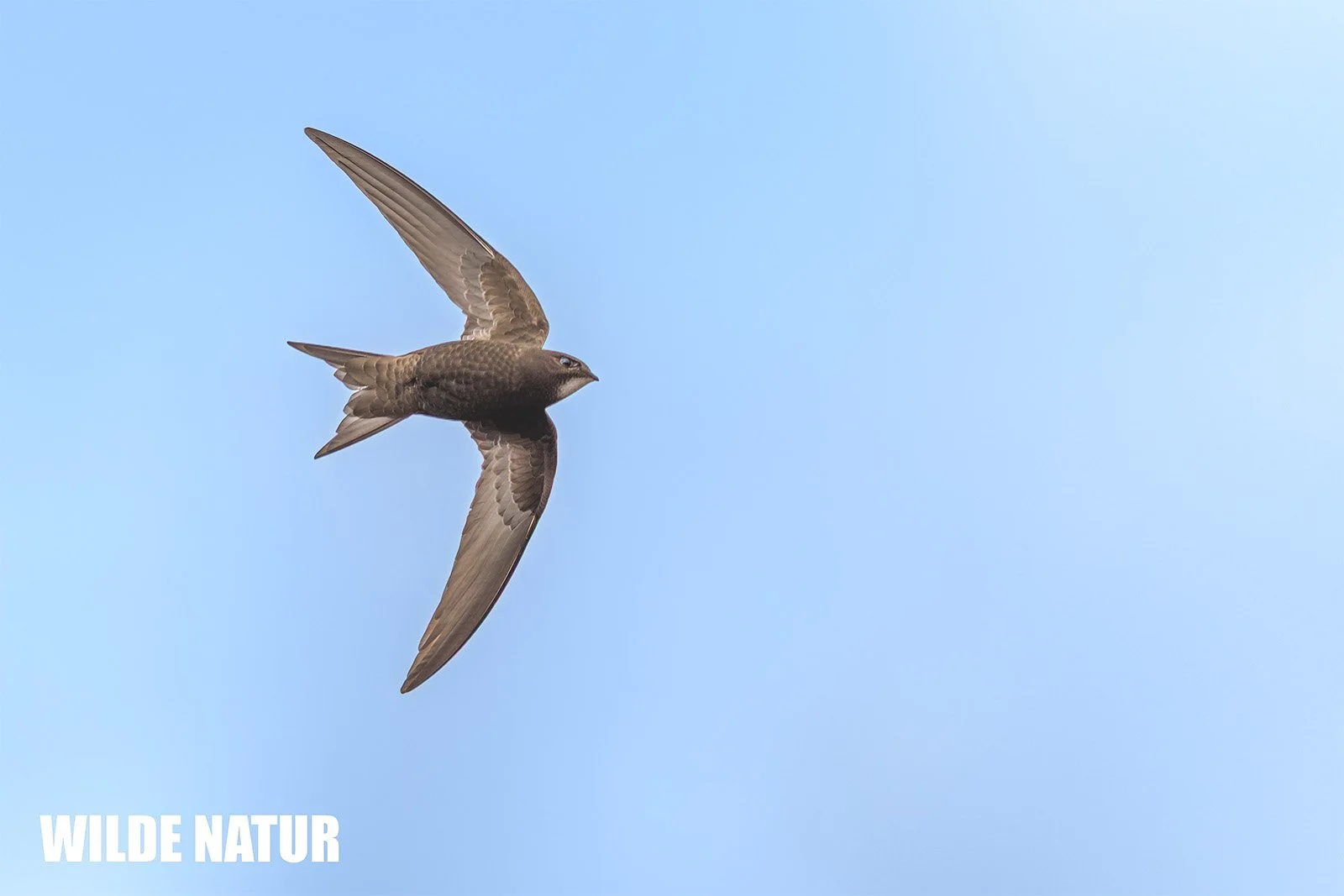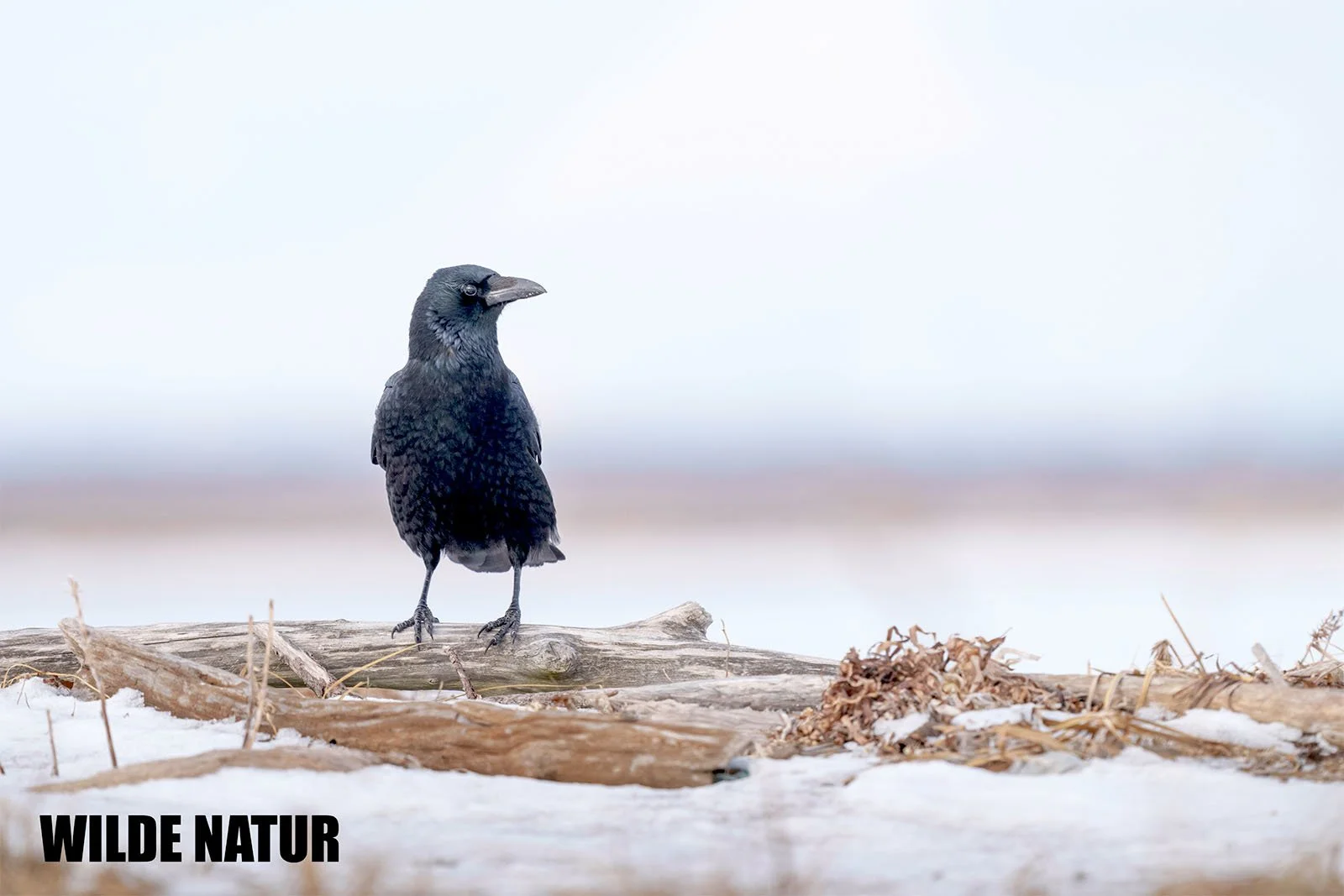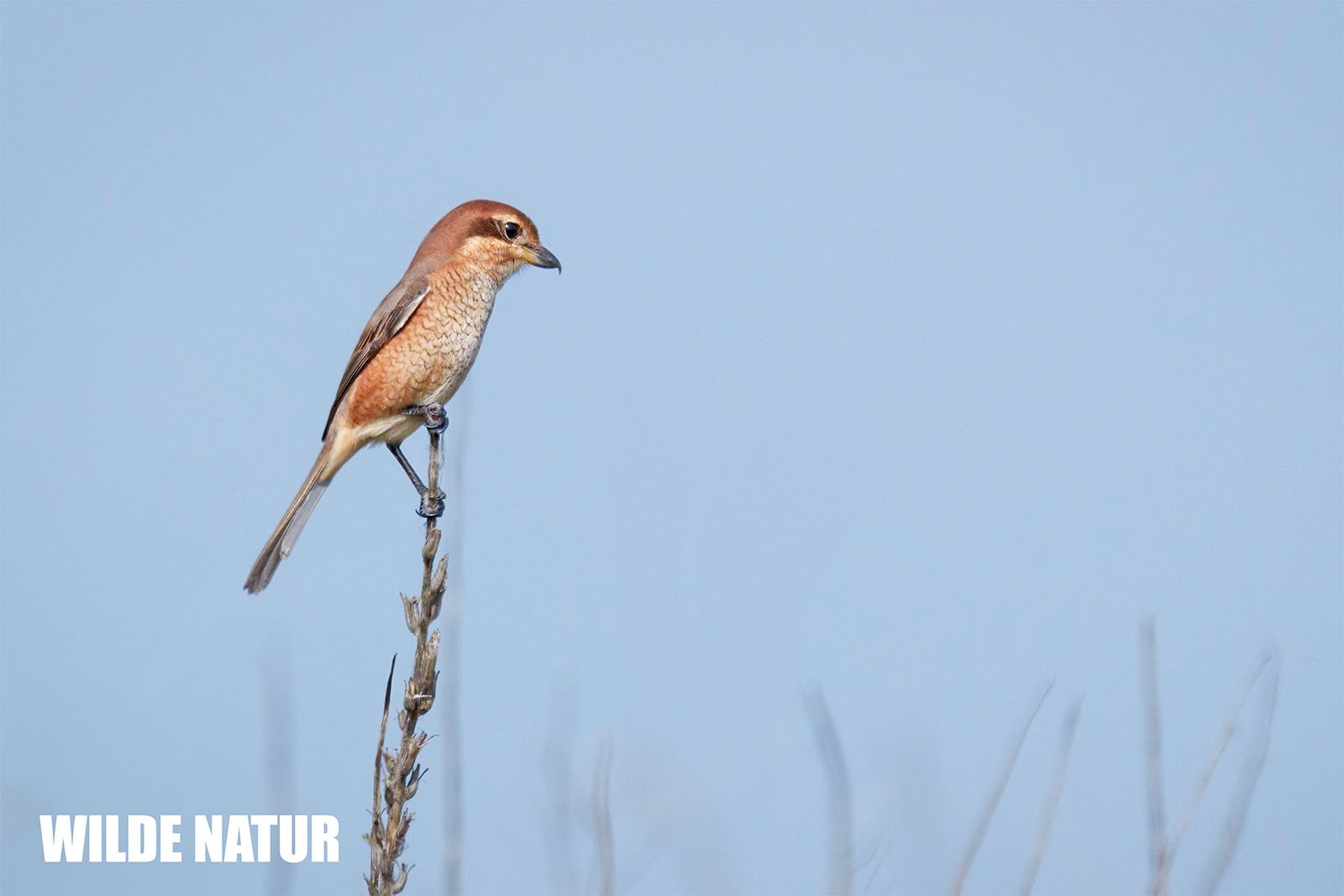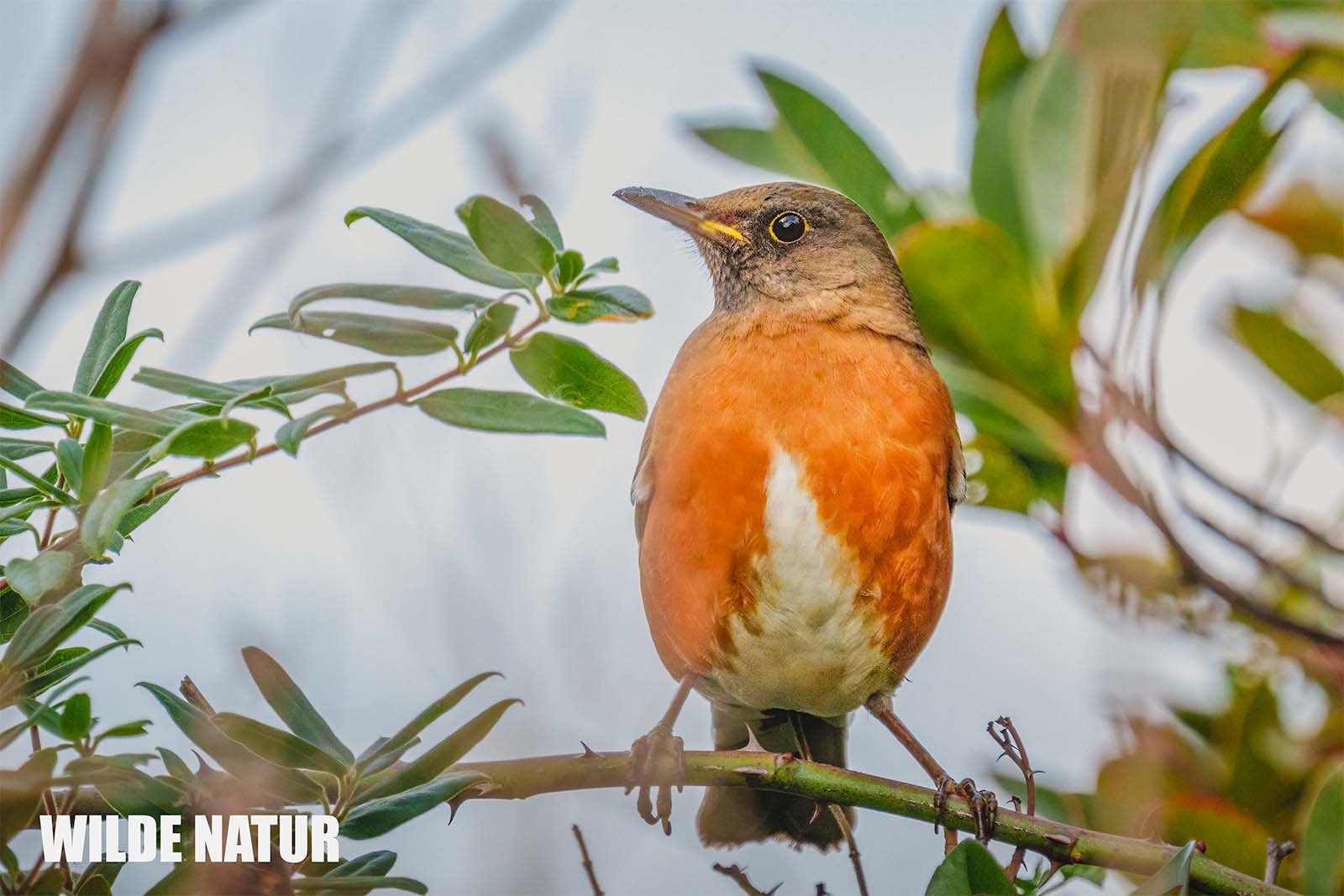Hooded crow (Corvus cornix)
Hooded crow (Corvus cornix) - Picture taken in Mecklenburg-Vorpommern, Germany
Key Data
Size: 48 - 54 cm
Weight: 400 - 600 g
Diet: Omnivorous - insects, larvae, snails, small vertebrates, fledglings, eggs, seeds, fruits, roots, carrion, waste
Season: All year
Observation Tip: Forests, fields, gardens, parks
Photography Tips
Lens: 200 mm and above
Difficulty Level: Easy
The Hooded crow (Corvus cornix) belongs to the family of corvids (Corvidae) and is a Eurasian bird species that is widespread in Northern, Eastern, and Southeastern Europe as well as parts of the Near East. It is an ashy-gray bird with a black head, neck, wings, tail, and thigh feathers, as well as a black bill, eyes, and feet. As an omnivore, it resembles the carrion crow (Corvus corone) in morphology and behavior to such an extent that many experts long regarded it as a subspecies of the same. Hybridization observed in areas where their ranges overlap supported this view. In recent years, however, the hooded crow has increasingly been recognized as a distinct species. The Royal Society for the Protection of Birds (RSPB), Avibase - The World Bird Database, and the IOC World Bird List maintained by the International Ornithologists' Union (IOU) now consider the hooded crow as its own species. Barthel and Krüger also grant the hooded crow the status of its own species in the list of bird species in Germany. However, the Handbook of the Birds of the World still classifies it as Corvus corone cornix and thus as a subspecies of the carrion crow.
Jelmer Poelstra and his team examined the genomes of various populations of carrion crows and hooded crows at varying distances from the hybridization zone and found only slight differences in the genetic material of both species. Despite occasional pairings in the contact zone, the outward appearance of the two species could inhibit hybridization since offspring often exhibit unusual plumage colors, making them unattractive for mate selection. However, backcrossing can produce hybrids that exchange genetic material between populations, thus ensuring the mixing in most of the genome. There were tiny differences in regions of the genome affecting genes responsible for feather coloration on the upper body of the hooded crow, giving it a lighter color.
The hooded crow has a shape resembling the carrion crow (C.c. corone), but with some differences. The head, throat, wings, tail, and thigh feathers are black and usually glossy, while the rest of the plumage is ashy-gray. The stout bill and legs are black, and the iris is dark brown. The size of the black chest patch varies. Like other crow species, only one molt occurs in autumn. Male hooded crows are usually larger than females, although the two sexes otherwise look similar. Their flight is typically straight, slow, and heavy. The length varies between 48 and 54 cm, closely resembling the carrion crow, while the wingspan, when spread, reaches about one meter. Younger birds have duller plumage with bluish or grayish eyes. The weight of adult birds is about 400 to 600 g, averaging 510 g. Although visually distinguishable from the carrion crow and the rook, the "kraa" calls of the hooded crow and the carrion crow are nearly indistinguishable.
The distribution areas of the hooded crow and carrion crow are connected through Ireland and Northern Scotland in Western Europe. The hooded crow is native to all of Scandinavia, Denmark, Russia, and Poland, as well as eastern Germany, the Czech Republic, and eastern Austria, as well as south of the Alpine arc in Italy and the Balkans. The distribution area of the Oriental carrion crow C. c. orientalis adjoins that of the hooded crow in Central and Eastern Asia. At points where the distribution areas of the two species meet in Europe, a stable hybrid zone forms with a width of up to 150 km, where both the two original forms and fertile hybrids live. In Germany, this hybrid zone extends from eastern Mecklenburg southwards along the Elbe to the Czech Republic.
The hooded crow has a diet similar to that of the carrion crow and is an omnivore, feeding on a variety of food items. These include invertebrates, bird eggs, nestlings, amphibians, mice, berries, nuts, fruits, seeds, as well as carrion and waste. They are also known to steal eggs from other birds such as gulls and cormorants when they are absent from coastal cliffs. In urban areas, they are fond of rummaging through garbage bins in search of food. The hooded crow plays an important role as a scavenger for a healthy ecosystem, preventing animal carcasses from posing a threat to other organisms. Like carrion crows, hooded crows are also known for dropping mollusks and crustaceans onto rocks to crack them open and eat them.
Outside the breeding season, hooded crows live either in pairs or in small family groups and in autumn and winter, also in large flocks. They are capable of reaching speeds of up to 50 km/h and show little fear of human proximity. Although they are often found in open terrain, they breed in forests, groves of trees, and increasingly in parks and gardens. When foraging, they are often observed in fields and on farmland. Regarding their social behavior, there is a separation between breeding birds, which occupy territories, and loosely cohesive non-breeder groups consisting of one- to five-year-old birds. Once they reach about seven years of age, members of non-breeder groups transition into breeding society. Hooded crows living in the north are migratory birds, departing in large numbers at the beginning of winter.
According to the Red List of Breeding Birds of Germany from 2007, the population of the hooded crow ranges from 63,000 to 84,000 individuals, placing it in the category of "moderately common" with 10,000 to 100,000 breeding pairs. The population trend between 1980 and 2005 was classified as stable, as there were no fluctuations of more than 20 percent within this period. Mecklenburg-Vorpommern reported the population of hooded crows in 2016 as ranging from 15,000 to 20,000 breeding pairs, while only 34 breeding pairs were counted in Schleswig-Holstein. Saxony-Anhalt recorded 5,000 to 8,000 breeding pairs in 2015. During the Hour of Garden Birds in 2021, 12,596 observations of hooded crows were reported. Overall, the population of the hooded crow is considered not threatened.



